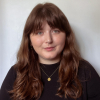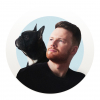
Girl maths in action – five ways brands can support women today
In a world where money matters brands have an opportunity to educate and support.

Participants of Creative Equals’ Disabled Creatives programme share some of the challenges of navigating the ad industry as a disabled creative

As the Disabled Creatives programme returns for a second year, Creative Equals CEO Ali Hanan, speaks to three individuals from last year’s cohort to understand more about the challenges of navigating a profession as a disabled creative.
The disability market is larger than China and expanding - 1.85 billion people, with $1.9 trillion in annual disposable income. Combine this with the friends and family of disabled individuals and together these groups have over $13 trillion in annual disposable income.
Yet, disabled people are often not visible in media and advertising content. In fact, research published by the Business Disability Forum - and conducted by Ipsos - found that almost a third of UK adults had not seen any disability represented in media and advertising content they’d seen, watched or read over the last six months.
And it’s not just that disabled people aren’t seen in creative output - disabled creatives are rarely seen in the industry at all. The Advertising Association’s landmark 2021 census showed that disabled talent is majorly underrepresented (9% versus 20% working age population).
Let’s be honest that these statistics are no coincidence. Diversity in creative output seldom exists without diversity in creative thinking.
With a growing body of research proving that diversity does indeed drive creativity, these startling statistics beg the question:
When the benefit seems so obvious, why is it that the creative industry has long overlooked disability inclusion in all aspects?
Well, the answer largely lies in stigma.
Stigma still represents one of the most pervasive barriers preventing people with disabilities from accessing equal opportunities. The reality is that disability stigma runs deep through history - so deep that it not only impacts how society as a whole views and treats disabled people, but it also impacts how disabled people view and treat themselves too.
Not only have many people with disabilities been shut out from the creative table, there are plenty who’ve been made to feel they don’t belong in the industry at all. Living a life at the sharp end of ableism, discrimination, stereotyping, and macro and microaggressions, has left many disabled people feeling incapable, unworthy and inferior (three of the most commonly referenced descriptors disabled people have shared with me recently).
Disabled and neurodivergent people are among the most creative in the world - every day, they manage their minds and bodies in a world that has not been built for them. But the creative industry has long failed to engage in the deep work that’s needed to move the dial on disability inclusion.
Last year we said enough is enough, with the launch of Disabled Creatives - a unique industry initiative that champions disabled talent and perspectives, and builds bridges into the creative industry for disabled talent.
Disabled Creatives is a fully-funded programme open to disabled and neurodivergent people from across the UK who’ve previously worked or studied as a creative in advertising, marketing or design. In addition to a mix of online, self-directed and interactive workshops, disabled creatives are given the opportunity to tackle a live creative advertising brief. The candidates also receive dedicated employability support, training workshops and mentorship after the programme has finished, to help on their journey back into employment.
Ahead of the programme’s 2024 return, I caught up with three individuals from last year’s cohort - Yama Noorzad, Imie Kent-Muller and James Goodwin Davies - to understand more about what life is like as a disabled and/or neurodivergent creative, including the barriers and challenges they’ve faced breaking into, and working in, the creative industry.

For Yama, living with disability has been a significant part of life, having shaped how he navigates the world and interacts with others. In addition to cerebral palsy and APD, Yama explains that he has, “a touch of anxiety, sprinkled with the occasional insomnia and depression.”
Yama said, “Growing up, I repeatedly felt like I was on the outskirts, grappling with feelings of difference and, sometimes, inadequacy. I struggled with self-doubt and faced barriers in accessing opportunities. However, I've learned to navigate the challenges and advocate for accommodations when needed.
“I’ve often thought that my disability is a bit of a curse, but I had a profound change in mindset coming out of the Disabled Creatives programme - predominantly that I am proud to be part of the disabled community. Ultimately, my disability has shaped my unique perspective and I can leverage it as a strength in my creative work.
“I want to emphasise the importance of creating inclusive spaces and opportunities for disabled creatives. By recognising and valuing our unique perspectives and contributions, we can foster a more diverse and equitable creative industry for everyone.”

Imie originally hid her disability in the workplace and pretended she was not disabled. However, she quickly burnt out and had to rethink what her life was going to look like moving forward.
Imie said, “It was daunting to find out about my autism and fibromyalgia at the beginning of my career when it was hard to get people to give me a chance, as well as the flexibility I needed, without the evidence to back up my creative skills.
“It was hard to imagine my place, especially when job advertisements often didn’t show how flexible or inclusive a company actually was. The combination of a lack of information and loss of self-confidence has made it hard for me to apply for jobs.
“The Disabled Creatives programme gave me the chance to build confidence in my skills. Meeting other disabled creatives enabled me to see that it is possible to find a place in the industry. Among many other learnings, I now understand my rights as a disabled employee and where to go for advice and support (which I would not have found on my own).”
Since taking part in the programme, Imie has earned a Google x Creative Equals scholarship in UX design and has received continued mentorship from Creative Equals.
Imie concluded, “My mentors have been helping me to understand where my skills are and how I can use them in a way that is both fulfilling and works with my health. I now understand the connection between, and power of, disability and creativity.”

Professionally, James’s dyslexia has made it difficult for him to fully understand tasks that are only print-outs and are not verbally communicated. He also feels overwhelmed when lengthy deliverables are not listed logically or are not in an accessible format.
James said: “I think the curse of creative self-doubt follows you in every aspect of working life. For me that includes those everyday admin tasks. Reading something and comprehending it at the same speed as most of my colleagues is an anxiety-inducing challenge that I now understand is more than okay to highlight.
“By allowing us to talk with fellow neurodiverse and disabled creatives who are in senior positions, the Disabled Creatives programme reassured me that others should not judge me as harshly as I do myself. Working alongside a fellow creative on a real-life brief flexed my creative brain and reignited a passion for pursuing a creative role as I look to pivot within advertising into a more conceptual position.”
Shutting out disabled and neurodivergent people from the creative industry, and making it hard for them to retain their roles, isn’t just consequential for the creative output, it can be hugely consequential - both personally and professionally - for individuals too.
As an industry, we must do better. The need for action on disability and neurodiversity inclusivity is inarguable.
Quite frankly, leaders that fail to act are missing out on the most creative minds in the world.
Creative Equals started as a side hustle by the award-winning Creative Director Ali Hanan in 2015. Throughout her 20+ year career, she'd seen the impact of the lack of diversity within the industry, and set up Creative Equals as the change we need to see in the wider creative and tech sector.
Looks like you need to create a Creativebrief account to perform this action.
Create account Sign inLooks like you need to create a Creativebrief account to perform this action.
Create account Sign in